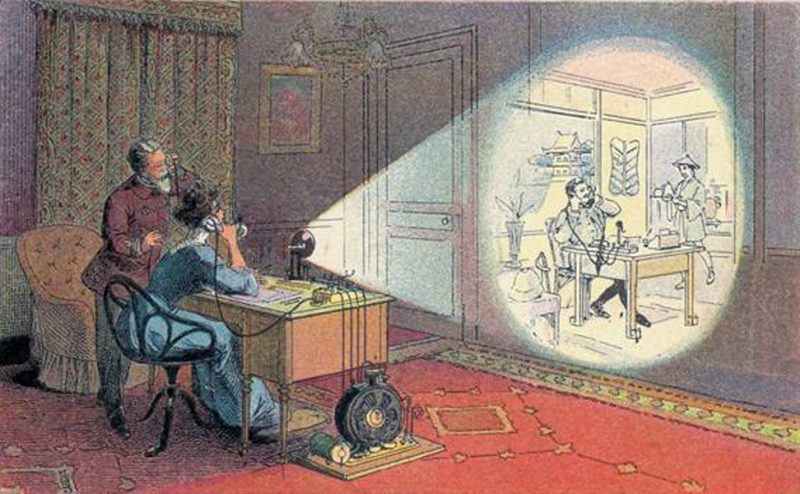Conceptualized in the late 1870s through the 1890s, the telephonoscope was an early concept of videophone and television, mentioned in various early science fiction works written by Albert Robida, a French illustrator, etcher, lithographer, caricaturist, and novelist. His device was a flat screen television display that delivered the latest news 24-hours a day, the latest plays, courses, and teleconferences.
It was also sketched in various cartoons by French-British cartoonist George du Maurier as a fictional invention by Thomas Edison including one made on December 9, 1879 in Punch magazine.
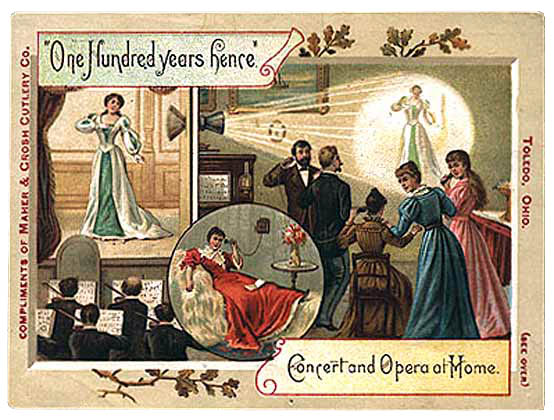
The telephonoscope was a device for receiving sound over great distance. The basic design consisted of long paper funnels to the ends of which were connected flexible tubes for insertion into the listener’s ears. When used with a speaking tube, the device reportedly enabled conversation to be “carried on through a distance of one and a half to two miles in an ordinary tone of voice“. A low whisper, uttered without using the speaking trumpet, is distinctly audible at a distance of a thousand feet, and walking through grass and weeds may be heard at a much greater distance.
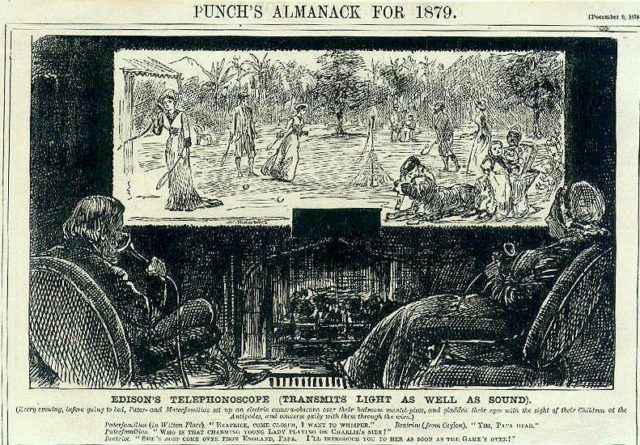
The cartoon above is from the pen of George du Maurier – a sketch of father and mother figures sitting in their home before what appears to be a cinema screen, television or video display. They are talking into and listening from, cylinders in their hands. It was printed in the Punch Almanack for 1879. Although titled “Edison’s Telephonoscope” it is not, in fact, a creation of Thomas Edison’s at all (either realised or proposed) but rather an imagining by Maurier of what the great inventor might come up with next. The caption reads:
(Every evening, before going to bed, Pater and Materfamilias set up an electric camera obscura over their bedroom mantel-piece, and gladden their eyes with the sight of their Children at the Antipodes, and converse gaily with them through the wire.)
Paterfamilias (in Willow Place): “Beatrice, come closer, I want to whisper.”
Beatrice (from Ceylon): “Yes, Papa dear.”
Paterfamilias: Who is that charming young lady playing on Charlie’s side!
Beatrix: “She’s just come over from England, Papa. I’ll introduce you as soon as the game’s over!”
Тhis Maurier image seems to be the first to imagine a two-way communication, combining the remote viewing with the ability to converse. The dimensions of the screen in the drawing have been determined to be almost identical to an aspect ratio of 2.76:1. Another way to put it is to say the wide screen image depicted in this 1879 India ink drawing is equal to today’s Ultra Panavison 70mm film format. Although large format film has been used since the late 1880’s, this ratio was not seen until the 1950’s.
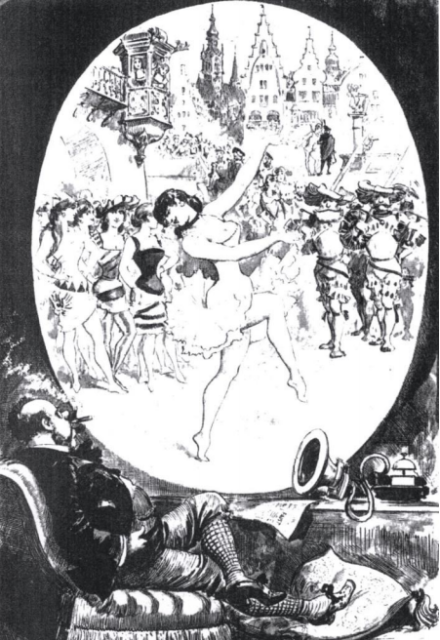
It was a playful, but remarkably accurate, prediction of things to come. More drawings followed Maurier’s, including one from a set of trading cards entitled “In the Year 2000” which were sold as souvenirs at the 1900 Paris Exposition.
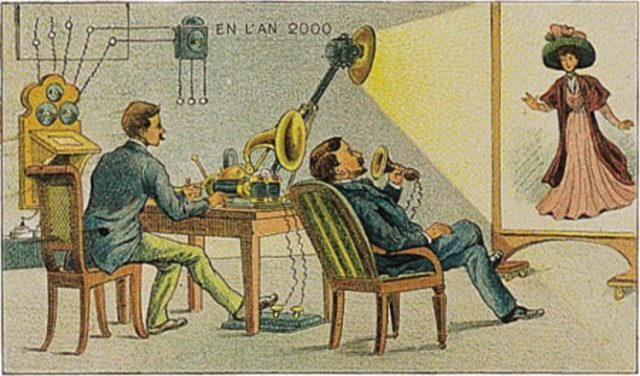
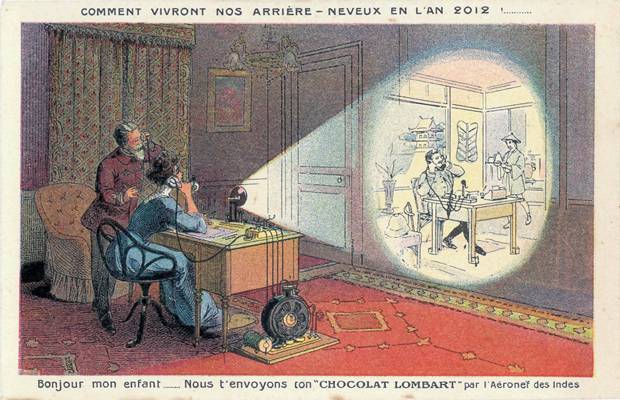
The card entitled “Correspondance Cinema-Phono-Telegraphique” shows an invention very similar to that pictured in Maurier’s. Interestingly, at the same Paris show, a Russian scientist named Constantin Perskyi read a paper to the International Electrcity Congress in which he described a device called “Television”, the first time the word had ever been used.
